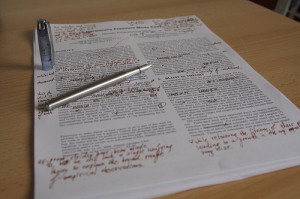Reply to a Terrible Brief
Posted
12 May 2014 in Tips and Tactics
After filing an opening brief, you have a month or more to see what your opponent has to say. The day finally arrives, and you snatch up your opponent’s brief and read it only to discover that your opponent has filed a truly bad brief, an extraordinarily poor piece of work that makes you laugh and cringe at the same time. How do you respond in your reply brief?
you have a month or more to see what your opponent has to say. The day finally arrives, and you snatch up your opponent’s brief and read it only to discover that your opponent has filed a truly bad brief, an extraordinarily poor piece of work that makes you laugh and cringe at the same time. How do you respond in your reply brief?










